

|
Beth Mead Memorial City Park
Beth Mead was born in April 1900, and died in January 1990. She was a member of the Rowell family, a name very familiar in Jefferson. She owned a number of properties and was a benefactor to several entities, including the Jefferson Volunteer Fire Department. She left the park at the corner of Lafayette and Market Streets in the care, custody and control of the City of Jefferson. Recently volunteers have refurbished the park, which is under the supervision of Ms. Mead's surviving family.
|
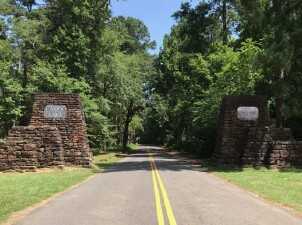
|
Caddo Lake State Park
Thick bald cypress and a tangle of aquatic plants thrive in the waters at Caddo Lake State Park. Because the vegetation is so lush, much of the lake is really a maze of sloughs, bayous, and ponds. The park affords excellent access to the diverse fishing in Texas. Also popular are the park's quaint cabins, built by the Civilian Conservation Corps in the 1930s. Caddo Lake State Park gets its name from Caddo Lake, a sprawling maze of bayous and sloughs covering, 26,810 acres of cypress swamp. The average depth of the lake is 8'-10' with the deep water in the bayou averaging about 20.' An angler's delight, the lake contains 71 species of fish. It is especially good for crappie and large-mouth and white bass. Naturalists can enjoy stately cypress trees, American lotus, and lily pads, waterfowl, alligators, turtles, frogs, snakes, raccoons, minks, nutrias, beavers, squirrels, armadillos, and white-tailed deer.
|

|
Carnegie Library
Located at 301 W. Lafayette Street, across from Beth Mead Park, this is one of only five Carnegie-donated libraries in the State of Texas that are still functioning as a library. The building was constructed based on Andrew Carnegie's strict guidelines in 1907. Partial to wooden floors, 16-foot high embossed metal ceilings and two-story structures, his influence is still evident today. The top floor was originally designed for community functions and included both a kitchen and auditorium.
|

|
Lions Club City Park
This park was once the site of a farmer's market in 1872, the city hall, and then the location for Jefferson High School. Actually, it was the home to a few Jefferson schools that were each destroyed by fire. After the final school burned and was established further north, it became a city park that was at one time maintained by the Jefferson's Lions Club. It has a beautiful gazebo, an arbor, a baseball diamond, a playground for children, and several picnic tables for families to use. During the Christmas season, it is the home to the Enchanted Forest, over 100 Christmas Trees that are sponsored and decorated by Jefferson individuals and businesses. The park is bounded by Jefferson, Taylor, Main and Lion Streets.
|
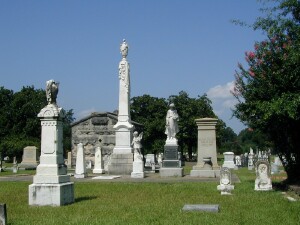
|
Oakwood Cemetery
The oldest headstone in the cemetery standing today is that of Rev. Benjamin Foscue who died of cholera on January 1, 1850. In the spring of 1858, the minutes for the City of Jefferson indicate that attention was given to further planning at the cemetery. In 1862, the Mt. Sinai Jewish Cemetery was purchased adjacent to the city cemetery. Today it is encompassed by Oakwood's main fence. By 1872, city records clearly show the city cemetery in the present location of Oakwood. A Roman Catholic Section was added in 1880 by city ordinance. Sections were added over the years as needed, and in 1972, a fence was placed around the perimeter of all of the sections, giving the cemetery the definitive look that it has today. It is a beautiful place to visit, but please remember that it is a place of rest and should be given the utmost respect. For further info on Oakwood, click on this link.
|
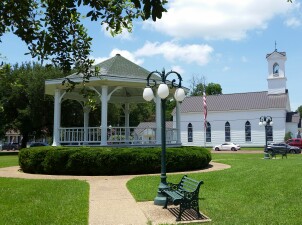
|
Otstott Park
George & Michelle Otstott dedicated this park on September 5, 1993 to the wonderful people of Jefferson, Texas as a token of their love and affection for this fine community.
Otstott Park serves as a public gathering place and an area for relaxation and enjoyment. Often used for weddings, religious services, public celebrations including national holidays. The park is also a setting for free concerts and musical events throughout the year.
This park is open to all people, children, pets, and visitors are especially welcome; you can be a part of a celebration or just enjoy a quiet moment. The park is well-known for being home to a "Jefferson Salutes America" celebration on July 4th every year.
|

|
Port Jefferson History & Nature Center
Dedicated in 2013, the Port Jefferson History & Nature Center is a hands-on, outdoor learning center and environmental park promoting habitat restoration along the historic riverfront in Jefferson, Texas. A project of the Army Corps of Engineers, The City of Jefferson, and the Collins Academy, the nature center is a place where future generations can enjoy a naturally good time and see native habitat here flourish on the bayou. It is roughly fifty acres along historic riverfront property at Big Cypress Bayou where the waterway cradles downtown Jefferson. Three sections of the park will have a slightly different habitat emphasis with a path, concrete walkway and raised boardwalk allowing access.
|
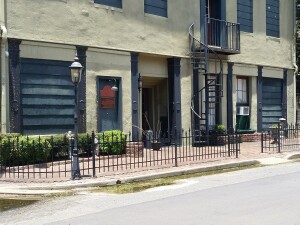
|
Schluter Park
Schluter Park is a patio-park established by Jefferson's F.A. Schluter Foundation in 2005. It is dedicated to the memory of the many Schluter families who pioneered social and economic development in Jefferson, Texas from the mid-1800s to the late 1900s. The park is located at the rear of the Jefferson Hotel on Dallas Street.
|
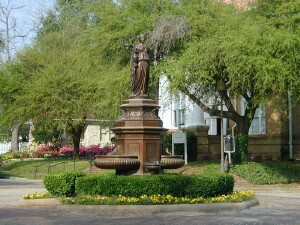
|
Sterne Fountain
Cast of pure bronze by the JL Mott Foundry in New Your City, the fountain was given to the City of Jefferson in 1912 by the children of Jacob and Ernestine Sterne. The statue is of Hebe, the Greek goddess of youth. Notice the different levels of the fountain - the large bowls on the side are for horses to drink from, the smaller fountains on the side for humans, and the small bowls at the bottom for dogs & cats.
|
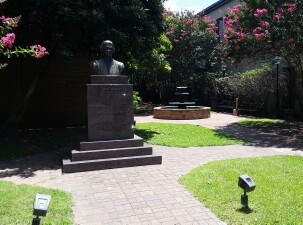
|
Thomas Jefferson Park
Located between the Jefferson Hotel and the Courthouse Annex on Austin Street, this park was developed by the Historic Jefferson Foundation in 1987 to honor the town's namesake. The bronze bust of Thomas Jefferson is by a sculptress from Jefferson, Tommie Wurtsbaugh Glick. The serpentine wall at the rear of the park was erected in 1989 by Weldon M. Rhyne, master brickmason and artist, following Thomas Jefferson's plan for the serpentine wall at the University of Virginia.
|
Click here to return to the Jefferson page.
|










